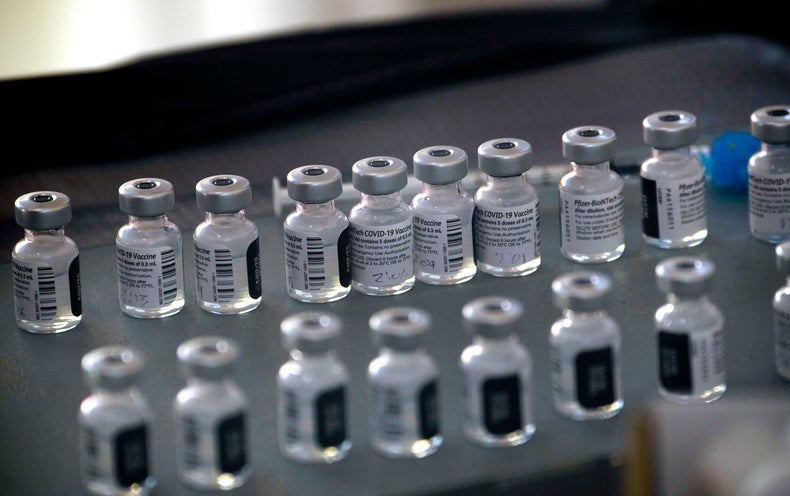You are here
ANALYSIS: New COVID Vaccines Need Absurd Amounts of Material and Labor
Primary tabs
 New COVID Vaccines Need Absurd Amounts of Material and Labor Companies are scrambling to obtain supplies for hundreds of millions of doses of a type of vaccine that has never been made at this scale before Scientific American
New COVID Vaccines Need Absurd Amounts of Material and Labor Companies are scrambling to obtain supplies for hundreds of millions of doses of a type of vaccine that has never been made at this scale before Scientific American Barely a year ago few people outside of a small network of scientists and companies had heard of mRNA vaccines. Today millions are pinning their hopes on these genetics-based immunizations, which have taken center stage in the fight against COVID. But deficiencies in needed supplies and materials for making the vaccines could lead to widespread shortages, some scientists say.
The first doses of mRNA COVID vaccines began arriving at hospitals in the U.S. and several other countries in December. An overarching question is how fast companies making them can scale up production to meet global demand. This is the first time mRNA vaccines have been authorized for use outside of clinical trials. They work by tricking the body’s own cells into making a viral protein that prompts immune reactions against infection. The U.S. has granted emergency authorization to two COVID vaccines so far—made by the pharmaceutical companies Pfizer and BioNTech and the biotechnology firm Moderna, respectively—and both rely on mRNA. A third company called CureVac, headquartered in Tübingen, Germany, currently has an mRNA vaccine in late-stage clinical trials. The Trump administration reached a deal with Pfizer in late December to provide 100 million additional doses to the U.S. by the end of July—resulting in twice the amount the government originally ordered. Together with its partner BioNTech, Pfizer plans to produce and distribute 1.3 billion doses globally next year. And Moderna intends to produce 500 million to one billion doses, of which 200 million have already been allocated to the U.S.
Meeting these targets will be no easy feat. “There aren’t any facilities in the world that have manufactured mRNA at such a large scale before,” says Maria Elena Bottazzi, a virologist at Baylor College of Medicine and Texas Children’s Hospital in Houston. Pfizer and Moderna have been building supply networks to shift from clinical to large-scale production. But each step in the manufacturing process requires raw materials that, before COVID, were only produced in the amounts needed for clinical research—“not sustained production of billions of doses,” says Patrick Boyle, an executive responsible for research and development at the Boston-based synthetic biology company Ginkgo Bioworks. ...
According to a November report by the U.S. Government Accountability Office (GAO), much of what is needed to produce these vaccines is in short supply. During interviews with GOA staff, manufacturing plant personnel described challenges in obtaining reagents and certain chemicals, as well as glass vials, syringes and other hardware. They also cited a shortage of “fill and finish” facilities where vaccine doses are loaded into sterile containers and a dearth of workers with the specialized skills needed to run mRNA production processes. Such resource scarcities, GAO concluded, could lead to production backlogs. ...



Recent Comments